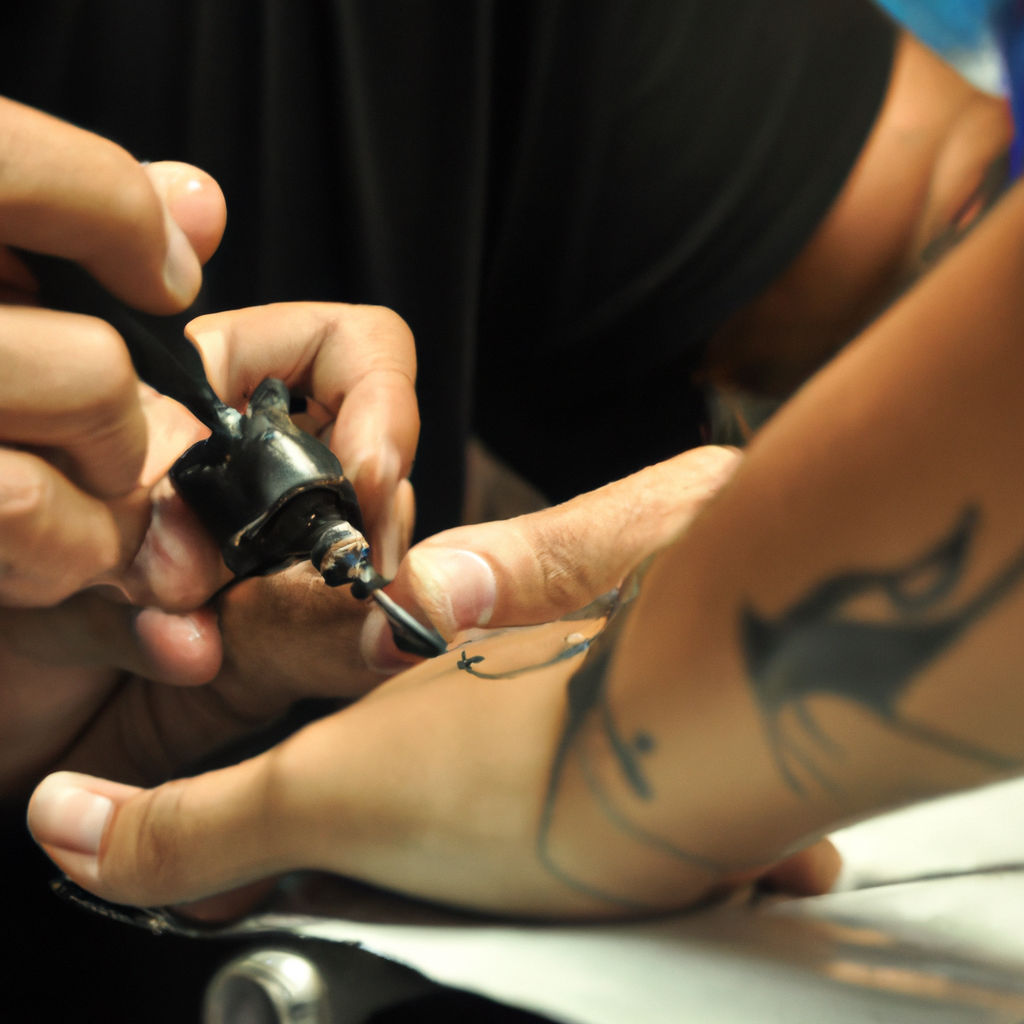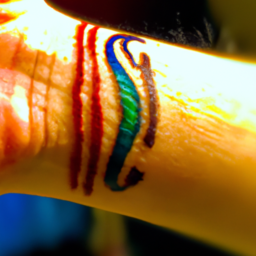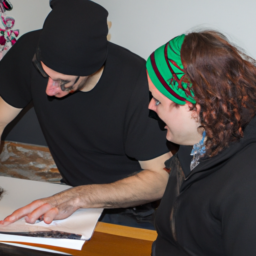“2024 Guide to Hebrew Tattoo Translations: Finding Meaning and Beauty”
The surge in tattoos’ popularity in recent years is a testament to the fusion of body art into the cultural mainstream. As a form of self-expression, tattoos allow individuals to narrate their stories, beliefs, values, or aspects of their personality through ink. Notably, the fascination with Hebrew tattoos has notably risen among young adults. Hebrew tattoos are often more appealing due to the historical significance and aesthetic beauty of the Hebrew script. However, given the depth and complexity of the Hebrew language, understanding the correct transliteration and translations of chosen tattoos is quintessential to avoid potential embarrassment or unintended meanings.
The Vibrant Tapestry Of The Hebrew Language
Rooted deep in the sands of history, the Hebrew language is a rich tapestry of spirituality, culture, and tradition. Its Semitic origin weaves it into a uniquely different structure and meaning compared to English and other Western languages. The Hebrew language is read from right to left, presenting notable disparities from English in both sentence structure and grammar, contributing to its character and uniqueness. More essentially, every Hebrew letter and word carries symbolic and spiritual significance, underlining the importance of accurate comprehension and interpretation.
Fascination with Hebrew tattoos extends beyond the mystery of a foreign language to the allure of the compelling history and significance that each Hebrew script encompasses. Whether it’s a single word or a scriptural verse, a Hebrew tattoo is often seen as a mirror to one’s life philosophy, a badge of faith or a direct connection to the ancient Holy land. However, the beauty and power of these tattoos lie in their accurate translations, underscoring the need for professional Hebrew translation services.
Delving into Popular Hebrew Tattoos and Their Meanings
In the world of body art, Hebrew tattoos have garnered substantial renown. The enigmatic beauty of the Hebrew script attracts numerous tattoo enthusiasts who seek to embed profound meanings onto their skins. One such ubiquitous tattoo in Hebrew reads as ‘אהבה’, meaning ‘love’. This tattoo is a simplistic yet powerful representation of love and compassion, serving as a constant reminder of this universal emotion.
Another popular piece happens to be the ‘חי’, translating to ‘life’ in English. This symbol denotes a life filled with positive energy and enthusiasm and is regarded as a lucky fortune in Hebrew culture. Several tattoo enthusiasts also turn to the ‘שלום’ symbol, meaning ‘peace’. It serves as a tangible symbol of tranquility, harmony and amity, core principles underlying the Hebrew culture.
Decoding the Significance of Professional Hebrew Translation
Given the profound significance and intricate symbolism underpinning each Hebrew tattoo, a precise translation is a must. Tattoos are permanent marks that express an individual’s personality, beliefs, or life philosophies. Hence, any misinterpretation or mistranslation can lead to unintended messages, leading in turn to potential embarrassment.
Misinterpretations in Hebrew Tattoos
A notable illustration of such a mishap was the Hebrew tattoo on a famous celebrity’s body that was ideated to signify ‘freedom’ but erroneously ended up meaning ‘free’ due to a slight miscalculation in translation. Such instances underscore the importance of professional translation when approaching Hebrew tattoos.
It’s crucial to employ a proficient translator familiar with the script’s nuances and capable of accurately reflecting the intended meaning. Tattoo artists should also have a strong grasp of the Hebrew script’s rules and structures, being skilled enough to artistically render the designs without losing the intended meaning.
The Power of Precise Translation
Opting for a professional translator doesn’t only assure a meaningful and correct depiction of one’s chosen symbol but also wards off the risk of misrepresenting an age-old culture or disrespecting the Hebrew language. Each Hebrew symbol exists as an emblem of wisdom, tradition, and spirituality, thus demanding cautious and judicious handling when used for tattooing. From the single-lettered ‘חי’ to longer phrases, the right translation incorporates the depth of Hebrew essence and helps one connect with the rich tapestry of meanings these symbols represent.
In essence, Hebrew tattoos provide an intriguing fusion of the visual with the conceptual. However, maintaining their integrity necessitates a fine balance between artistic endeavour and linguistic accuracy, avoiding mistranslation mishaps and respecting the Hebrew language in all its grandeur.

Unveiling the Significance of Hebrew Calligraphy in Tattoos
If there’s one key component that influences the aesthetic appeal and cultural significance of Hebrew tattoos, it’s Hebrew calligraphy. This ancient art form brings the intricate simplicity and spiritual depth of the Hebrew language to life. When adopted in tattoos, it not only amplifies the visual impact but also the spiritual and cultural resonance of the body art.
Hebrew calligraphy showcases a unique blend of innovation and tradition, where every curve, dot and stroke is written with purpose. Unlike English alphabetical arrangement, Hebrew letters are derived from the root letters, contributing to a distinct semantic meaning—making the tattoo more personal and profound.
Appraising the Importance of Correct Forms in Hebrew Script
While a deep descent into Hebrew calligraphy reveals a world of beauty and intricacy, it also underscores the challenge of maintaining correct forms and strokes in the Hebrew script. Incorrect renditions can transform the meaning entirely, overpowering the sentiment originally intended.
Professional tattoo artists and language experts concur on this. If the shapes and lines are distorted, it can lead to embarrassing translations, a spectacle none desire when it comes to permanent body art.
Delving into the Spiritual Realm: Bible Verses as Tattoo Inspirations
From inspirational quotes to meaningful symbols, the Hebrew language offers a plethora of options for tattoos. Among these, Hebrew Bible verses have gained a special place in the world of body art. They serve as a constant reminder of faith, hope and courage, directly inked onto the skin in the ancient script.
However, due to the complex structures and deep contexts, translating these verse into precise English can be a challenging task. For instance, a well-known verse like “Yea, though I walk through the valley of the shadow of death, I will fear no evil”; when rendered in Hebrew, holds its poetic charm while incorporating a spiritual resonance that resonates with many tattoo enthusiasts.
The correct understanding and translation of these cherished verses demand a comprehensive grasp of Hebrew language and theology, ensuring that the final tattoo is a testament to faith and an emblem of identity, accurately and beautifully rendered in Hebrew calligraphy.
In conclusion, when Hebrew calligraphy and Bible verses combine on the canvas of the skin, it results in a powerful personal statement that goes beyond mere body art. It becomes a symbol of spiritual faith, cultural identity, and testament to the resilience of an ancient language in the modern age.
Understanding Cultural Respect and Appropriation in Hebrew Tattoos
The popularity of Hebrew tattoos among young adults may be viewed by some as a sign of deep appreciation for the rich history, spiritual significance, and beauty of the Hebrew language. However, it is crucial to delve into the issue of cultural appropriation to ensure this fascination doesn’t tiptoe the line of disrespect. Cultural appropriation relates to individuals adopting elements of a culture that is not their own, especially without permission or proper understanding. Thus, one may ask – are Hebrew tattoos, especially among non-Jews, respectful or offensive?
The answer is complex and depends on the intention, understanding, and respect of the wearer towards the Hebrew language and Jewish tradition. From one perspective, numerous experts within the Jewish community argue a positive stance as they believe it’s a way of sharing and embracing Jewish culture globally. However, others express concerns about the misuse and potential trivialization of deeply significant Hebrew phrases or symbols.
An example that helps to understand this is the practice of using Hebrew Bible verses for tattoos. Many non-Jewish individuals tattoo Hebrew verses on their bodies without understanding their cultural and theological significance. It is therefore, essential to not just seek a correct translation but also to comprehend and respect its true meaning.
The Pivotal Role of Tattoo Artists in Delivering Correct Hebrew Tattoos
While the responsibility of understanding and respecting Jewish culture primarily rests on the individuals getting the tattoos, tattoo artists also play an indispensable part. Tattoo artists, particularly those who regularly cater to requests for Hebrew tattoos, should ensure they are well-versed in translating and inscribing the Hebrew script accurately.
Artists should also educate themselves about the cultural significance of the Hebrew phrases or symbols they tattoo and inform their clients about it as well. In-depth interviews with professional tattoo artists experienced in Hebrew translations reveal their commitment to accurate translations and a deep respect for the source culture.
Artists emphasize that it’s not just about inscribing a design; it’s about transferring a piece of a cultural heritage onto someone’s skin. Hence, understanding the nuances of the Hebrew text, ensuring correct forms and strokes, and giving due respect to the Hebrew language is of paramount importance to them.
In conclusion, Hebrew tattoos can be a beautiful tribute to Jewish culture and the Hebrew language, as long as they are borne out of respect and a comprehensive understanding of their cultural significance. Both tattoo wearers and artists bear the responsibility of preserving the cultural integrity and beauty of Hebrew tattoos.

Understanding the Legal and Health Safety Considerations in 2024 for getting a Tattoo
The allure of immersing oneself in the mesmerizing beauty of Hebrew tattoos or any form of body art comes with its own set of responsibilities, primarily centered around legal and health safety aspects. As we navigate through 2024, it is essential to stay abreast with the latest safety regulations and rules governing the act of inking oneself.
Body inking is not just about exhibiting artistic flair or making a fashion statement. With evolving times, the law has become considerably meticulous, especially with respect to minors getting tattoos, consent forms, hygiene standards, and professionalism exhibited by the tattoo practitioners. Adherence to these regulations is essential in not just preserving the quality of tattoo artistry but also minimizing potential legal complications.
Navigating the Health Risks Associated with Tattoos
In addition to following the legal guidelines, understanding the potential health risks associated with tattoos is paramount. Despite the prevalent popularity of tattoos, health implications like allergic responses, skin infections, and transmission of bloodborne diseases cannot be undermined.
Post tattoo care is another issue that requires significant attention. A freshly done tattoo is essentially a wound that calls for adequate protection and care to avoid infections and enhance healing. Industry-accepted practices like moisturizing the tattooed area, avoiding exposure to sunlight, refraining from itching the newly tattooed area, and maintaining overall personal hygiene contribute effectively to reducing health risks associated with tattoos.
In conclusion, while the charm of Hebrew tattoos or any body art may be captivating, it is pertinent to understand the legal constraints and health safety measures in the year 2024. After all, the safest tattoo is not just the one that looks aesthetically pleasing, but also one acquired following due due diligence. It is advisable to approach professional tattoo artists experienced in the field and ensure you are well-versed with the rules and potential health risks associated with the art. Keep yourself safe and enjoy the rich beauty of Hebrew tattoos without any worries.

In concluding, the overarching significance of understanding the essence and meaning of Hebrew tattoos cannot be overstressed. In today’s popular culture, where Hebrew tattoo designs are a rage among the new-age tattoo enthusiasts, there needs to be a broader awareness about the profound history, symbolism, and spiritual underpinnings of these tattoos.
Remember, tattoos are a personal expression and hence, should be handled with care, especially when dealing with Hebrew script which carries an abundance of cultural and religious importance. Misinterpretations or mistranslations of the Hebrew script not only result in embarrassment but may also inadvertently offend the sensibilities of a deeply rooted culture and tradition.
Embracing the beauty of the Hebrew language in tattoo art requires a careful balance of respect for Jewish customs and traditions. The key is to appreciate the aesthetics, craftsmanship, and richness the Hebrew script adds to the world of inking, whilst tactfully steering away from religious and cultural appropriation.
The role of professional translation and the necessity of utilising professional Hebrew translators should also be emphasised, especially in tattoo artistry. Artists should commit to correctly presenting the Hebrew script and understanding the granular differences and nuances in the language to respect the cultural heritage tied to it.
Finally, understand that the choice of getting a Hebrew tattoo is a personal one – it is an individual’s journey of creative expression, spirituality, or connection to certain beliefs or ideologies. Just ensure that your choice is well-informed, respectful, and true to who you are. Discover the beauty and depth of the Hebrew language, and embrace it respectfully in your unique skin art.

